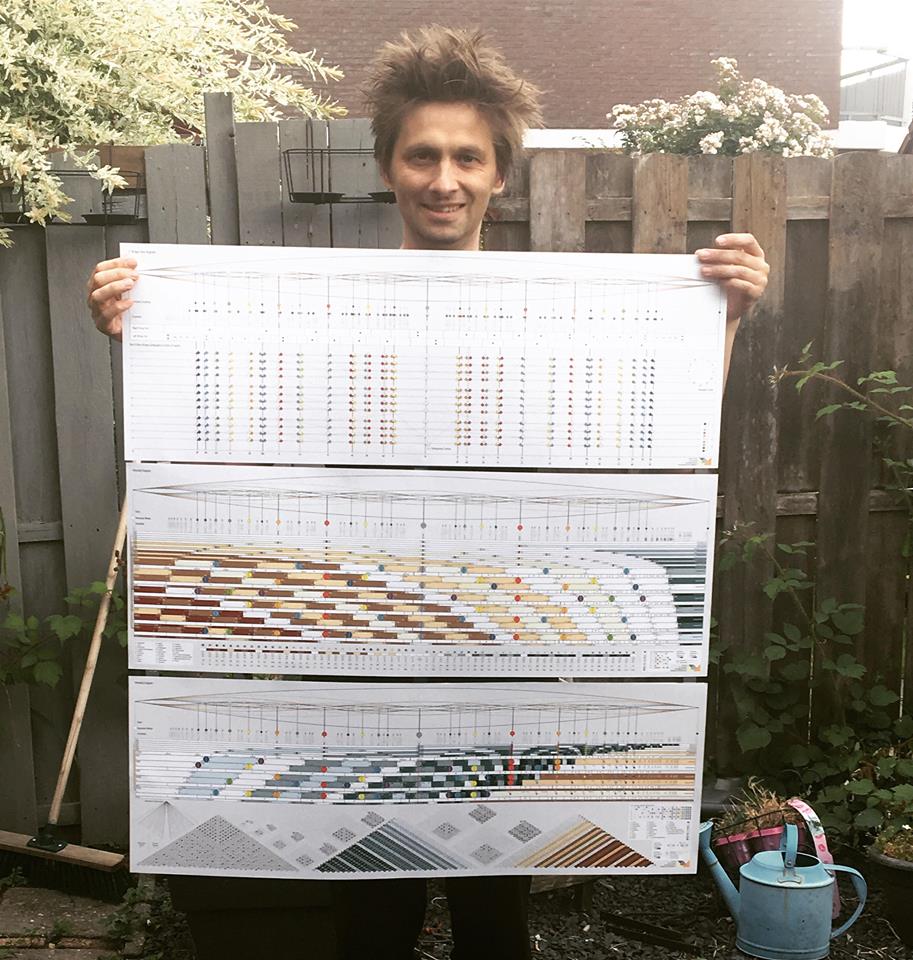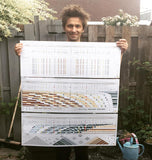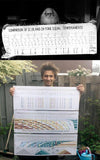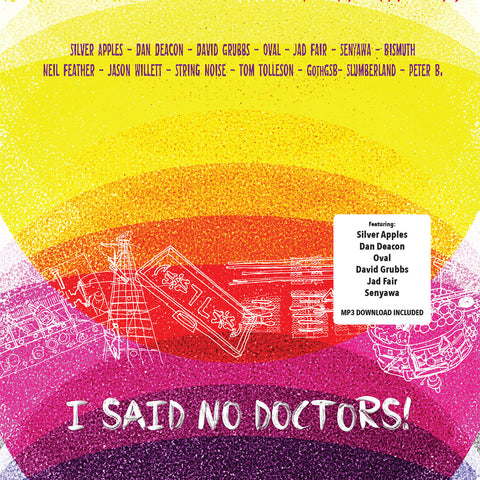Otonality/Utonality/3rd Bridge Posters by Yuri Landman
$11.00
Three beautiful posters by instrument builder Yuri Landman for music theory reference -
Otonality - From Harry Partch's theory and familiar to anyone who has studied Just Intonation. Otonality is a collection of pitches which can be expressed in ratios, expressing their relationship to the fixed tone, that have equal denominators. For example, 1/1, 5/4, and 3/2 (just major chord) form an otonality because they can be written as 4/4, 5/4, 6/4.
Utonality - Also from Harry Partch - The inversion is the inversion of an Otonality: it is formed by building the same interval sequence as that of an Otonality downward from the root of the chord, rather than upward. The analogy, in this case, is not to the harmonic series but to the subharmonic, or undertone series.
3rd bridge - Stringed instruments which have a 3rd bridge such as the Jazzmasters used by Glenn Branca, Sonic Youth and Yuri Landman's Caterpillar Drum Guitar.
If these ideas are new to you, here's why they might be of interest -
Western equal temperament is a useful intonation system which allows us to transpose music to different keys accurately. For westerners it forms the backbone of our tuning and music theory.
Unfortunately it's also out of tune.
Why is that? When played in a large range of octaves (7) we see octaves (represented by the just intonation ratio 2/1) adding up to 128 or
(2⁄1)7 = 128
However the same pitch range of fifths (to the twelfth power) is
(3⁄2)12 = 129.74
By following the natural order of harmonics which appear above a root pitch, we have an intonation system that is naturally in tune.
These posters represent the science behind tuning in a clear and useful graphical form. The harmonic and subharmonic series isn't an unproven approach to alternate tuning, it follows the physics of the naturally occurring harmonic overtone series. This has been used to great effect by composers such as Alvin Lucier (the movement "Shimmer" in his piece Glissade) and much of the work of Georg Frederich Haas.
All three posters are plot-printer prints and come in either signed or unsigned editions (by Yuri Landman).





